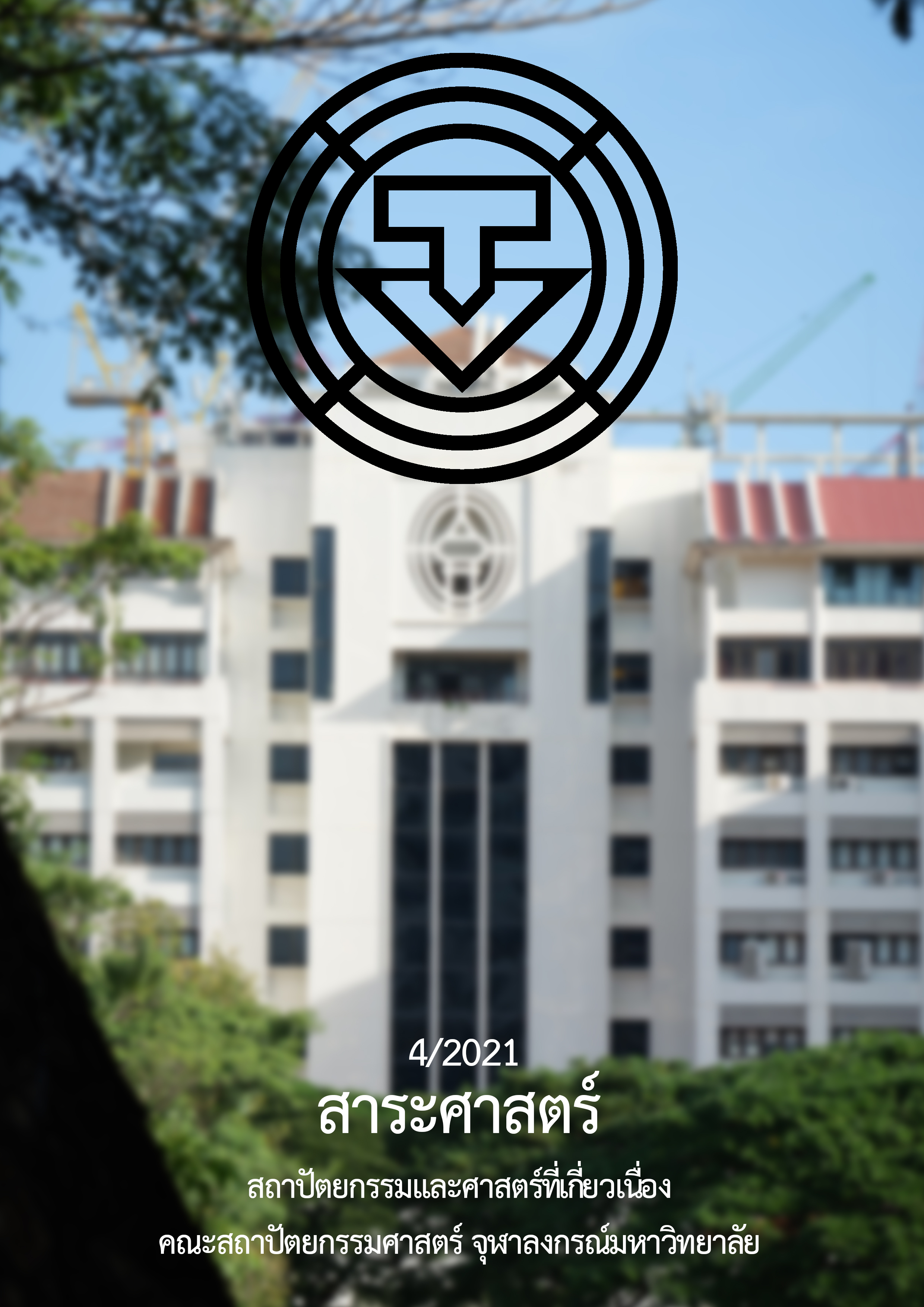การปลูกผักไร้สารพิษโดยใช้พลังงานทดแทนในพื้นที่จำกัด: การเปรียบเทียบผลการทดลองปลูกผักกรีนโอ้คระหว่างแปลงที่ใช้และไม่ใช้แผงโซล่าเซลล์
Main Article Content
บทคัดย่อ
งานวิจัยนี้มีวัตถุประสงค์เพื่อศึกษาเทคโนโลยีและออกแบบพื้นที่สำหรับปลูกผักไร้สารพิษให้เหมาะสมกับพื้นที่ในอาคารพาณิชย์หรือทาวน์เฮาส์ และศึกษาผลที่ได้จากการปลูกผักไร้สารพิษทั้งจากแปลงที่ใช้แผงโซล่าเซลล์และส่องไฟสว่างตอนกลางคืนกับแปลงที่ไม่ใช้ ประชากรและตัวอย่างในงานวิจัยครั้งนี้ คือ ต้นผักกรีนโอ้ค จำนวน 60 ต้น การศึกษานี้พบว่า แปลงผักทั้งสองแปลงถูกออกแบบให้มีปัจจัยในการเจริญเติบโตของพืชครบถ้วน 4 องค์ประกอบ ได้แก่ อากาศ น้ำ ธาตุอาหาร และที่ค้ำจุนลำต้น นอกจากนี้ แปลงผักทั้งสองยังถูกออกแบบให้เป็นการปลูกพืชในน้ำแบบน้ำไหล ซึ่งมีปั๊มน้ำเพื่อให้เกิดการไหลเวียนของน้ำ และยังถูกออกแบบให้มีความสวยงามเพื่อเป็นพื้นที่สีเขียวสำหรับนั่งพักผ่อนหย่อนใจได้อีกด้วย ผลที่ได้จากการปลูกผักพบว่า แปลงที่ใช้แผงโซล่าเซลล์และส่องไฟสว่างตอนกลางคืนใช้เวลาในการปลูกและพลังงานไฟฟ้าน้อยกว่าแปลงที่ไม่ใช้อย่างมีนัยสำคัญทางสถิติ
Article Details
เอกสารอ้างอิง
กรมส่งเสริมการเกษตร. (2558). การปลูกผักไฮโดรโปนิกส์. สืบค้นจาก http://www.servicelink.doae.go.th/corner%20book/book%2005/Hydropronic.pdf
ดนิตา พัฒนวนิชชากร. (2551). เปรียบเทียบเทคนิคการปลูกพืชแบบไม่ใช้ดินชนิดต่างๆ ต่อการผลิตผักกาดฮ่องเต้. (วิทยานิพนธ์ปริญญามหาบัณฑิต, มหาวิทยาลัยเกษตรศาสตร์ วิทยาเขตเฉลิมพระเกียรติ).
ตลาดไท. (2563). ข้อมูลตลาดผัก. สืบค้นเมื่อ 15 สิงหาคม 2563, จาก https://talaadthai.com/product/8-13-01-green-oak?date=2020-10-15
ถิระวรรธน์ สืบธนะวงษ์ และ กรวิทย์ กระจ่างพันธ์. (2561). ระบบควบคุมสำหรับการปลูกพืขแบบแอโรโพนิกส์. วารสารวิทยาศาสตร์เกษตร, 49(พิเศษ), 494-497.
ธนากร น้ำหอมจันทร์ และ อติกร เสรีพัฒนานนท์. (2557). ระบบควบคุมอุณหภูมิและความชื้นสัมพัทธ์ในโรงเรือนเพาะปลูกพืชไร้ดินแบบทำความเย็นด้วยวิธีการระเหยของน้ำร่วมกับการสเปรย์ละอองน้ำแบบอัตโนมัติ โดยใช้ระบบควบคุมเชิงตรรกะแบบโปรแกรมได้. วารสารวิชาการมหาวิทยาลัยอีสเทิร์นเอเชีย ฉบับวิทยาศาสตร์และเทคโนโลยี, 8(1), 98-111.
ธรรมศักดิ์ ทองเกตุ. [ม.ป.ป.]. การปลูกพืชไม่ใช้ดิน. สืบค้นจาก http://eto.ku.ac.th/neweto/e- book/other/soliess%20plants.pdf
รัตนศิริ กิตติก้องนภางค์. (2563). ปลูกผักกินเอง ปลูกความมั่นคงทางอาหารในรั้ว, Green place. สืบค้นจาก https://www.greenpeace.org/thailand/story/12223/food-agriculture-growing-veggie/
สภาเกษตรกรแห่งชาติ. (2561). การปลูกผักแบบไฮโดรโปนิกส์. สืบค้นเมื่อ 20 เมษายน 2564, จาก https://www.nfc.or.th/content/7487
Ali, S. M., Dash, N., & Pradhan, A. (2012). Role of renewable energy on agriculture. International Journal of Engineering Sciences & Emerging Technologies, 4(1), 51-57.
Chel, A., & Kaushik, G. (2011). Renewable energy for sustainable agriculture. Agronomy for Sustainable Development, 31(1), 91-118.
Etae, N., Wamae, Y., Khummueng, W., Utaipan, T., & Ruangrak, E. (2020). Effects of artificial light sources on growth and phytochemicals content in green oak lettuce. Horticultura Brasileira, 38(2), 204-210.
Hassanien, R. H. E., Li, M., & Lin, W. D. (2016). Advanced applications of solar energy in agricultural greenhouses. Renewable and Sustainable Energy Reviews, 54, 989-1001.
Singh, S. N., Jha, R., & Nandwana, M. K. (2012, March). Optimal design of solar powered fuzzy control irrigation
system for cultivation of green vegetable plants in Rural India. In 2012 1st International Conference on Recent Advances in Information Technology (RAIT) (pp. 877-882). New York: IEEE.


